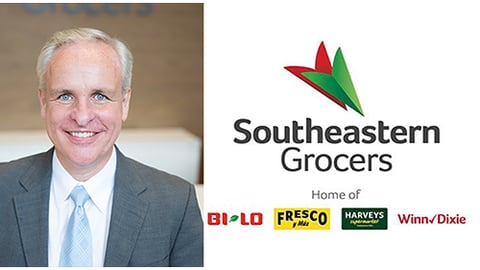NRF Day 1: Top 5 Takeaways
The record 40,000 people who packed into the Javits Center in New York on Sunday for the first day of the National Retail Federation’s (NRF) annual Big Show illustrate two things about the state of the retail industry: It's very healthy, and retailers are eager to discover technology-driven innovation to drive growth in a dynamic market.
This year’s event is taking place amid a strong U.S. economy and a just-ended holiday season that saw robust sales gains even though Thanksgiving fell late in November and compressed the traditional selling season. Unemployment is at record lows, and an average price of gasoline of around $2.50 a gallon means that consumers have money to spend. Food price inflation is benign and, in categories where there are increases, it's running below historical averages. With that as a backdrop, here are some key observations from day one:
- More, more, more: Increased access, speed and convenience equal more power for the consumer, according to BJ’s Wholesale Club CEO Christopher Baldwin, who is being succeeded as NRF chairman by Qurate Retail Inc. President and CEO Mike George. “Moving forward, consumers will expect even more. This is just the beginning of a revolution to give consumers more,” he said. To satisfy the “more” movement, Microsoft CEO Satya Nadella said that retail has entered an era of “tech intensity,” where companies will focus on personalization, anywhere commerce, digital marketing and empowered associates. With 30% of ecommerce sales coming from recommendations, Nadella said that the case for personalization is clear. The same is true with anywhere commerce, since 75% of shopping behavior begins online. “The experience of retail is changing because of tech,” Nadella said.
- The empowered employee: Walmart U.S. CEO John Furner, speaking after Baldwin and Nadella to kick NRF off on Sunday morning, dug deeper into the role of empowered associates. He recounted changes at Sam’s Club and Walmart over the past few years to increase pay, improve training and give employees more control over their scheduling as a means to improve satisfaction, reduce turnover and improve customer service. The presentation was originally titled “Why Retail Jobs are Good Jobs,” but Furner’s interviewer, MIT professor and author Zeynep Ton, changed the title to “Why Retail Jobs Can Be Good Jobs,” if retailers do the type of things Furner described.
- Speed wins: Ecommerce introduced dynamic pricing to the world of retail, but now promotions are becoming dynamic, too, and in-store pricing has to keep pace with digital. “Because the shopper is unpredictable, you have to be dynamic and nimble and have the science to automate promotion decisions,” said Cheryl Sullivan, president of DemandTec by Acoustic. “No one is doing that today, but that is where we are going.” Dynamic promotions mean that retailers need to implement “price mix optimization” promotions, because shoppers may be inspired by a single item, but they buy combinations of products, according to Gary Saarenvirta, CEO of Daisy Intelligence. And stores need to keep pace with the digital changes, too. “We don’t have a conversation with any retailers in the U.S. where Amazon doesn’t come up,” said Andrew Dark, CEO of electronic shelf label provider Displaydata. “The U.S has more momentum [with ESLs] than anywhere on the planet. The mass deployment in grocery is probably 12 months away."
- AI is everywhere: Artificial intelligence (AI) seems to come up in every conversation at NRF, and for good reason. The advanced technology is the only way that retailers can put the vast amounts of data available to them to work. “The promise of AI is real, but it requires real execution,” said Kevin Sterneckert, chief marketing officer with Symphony RetailAI. Yogesh Kulkarni, Antuit.ai's EVP of marketing and pricing analysis, said: “A lot of people want to implement AI. they see Amazon is doing it, and a lot of big companies are doing it, but how do they operationalize it?”
- Better, cheaper, faster: These three forces underpin virtually every solution that retailers are presented with at NRF. Accordingly, retailers are finding more ways to extend the useful life of specific pieces of retail hardware. It’s a concept that Carla Anderson, senior director of merchandising and cloud for Oracle Retail, calls the fully mobile store. “It doesn’t matter what form factor an associate is using, they all have the same capabilities," she said. "It gives retailers more ways to use the hardware they already have, because any mobile device can do anything.” Expense savings are found in other, less obvious ways as well. A key benefit of the cash-handling and recycling machines from Loomis is the avoidance of labor expense associated with cash in stores. “What we are trying to do is automate bank processes and reduce labor around cash handling by automating as many functions as we can,” said Tim Adair, VP of business development with Loomis.
While NRF isn’t a food show in the classic sense, in a world where every company is a tech company, it has become an important show for retailers of food and consumables.






